How to Achieve a Perfect Stainless Finish: From Brushed to Mirror
Stainless steel is popular because of its durability and sleek look, but "stainless finish" isn’t just one thing. You can have anything from a matte, brushed look to a super-shiny mirror finish. Getting the perfect finish needs the right tools and techniques.
Achieving a perfect stainless finish, whether brushed or mirror, requires careful surface preparation using a sequence of progressively finer abrasives, followed by either directional finishing with specific grit abrasives for a brushed look or multi-stage buffing with compounds and wheels for a mirror shine. The key is consistency and using the right products for each step.
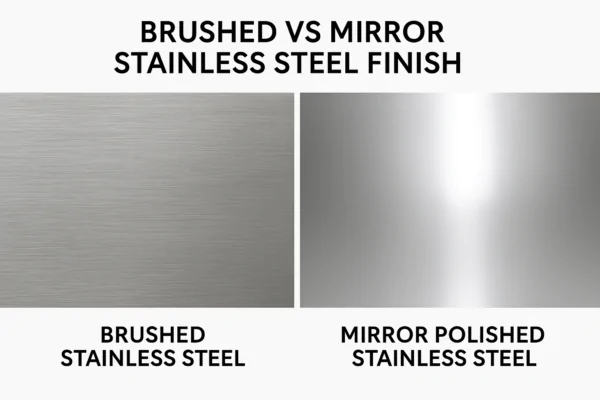
Comparison of brushed and mirror finishes on stainless steel.
Knowing the steps for each type of finish helps you get the look you want and avoid common mistakes.
How to get a brushed finish on stainless?
A brushed finish on stainless steel has a distinct look with fine, parallel lines. How do you create this popular appearance?
To get a brushed finish on stainless steel, first prepare the surface by removing imperfections with progressively finer abrasives, similar to preparing for polishing. Then, use a non-woven abrasive pad or a specific grit abrasive belt or disc designed for creating a satin or brushed finish, applying it uniformly in one consistent direction along the entire surface to create the characteristic parallel lines.
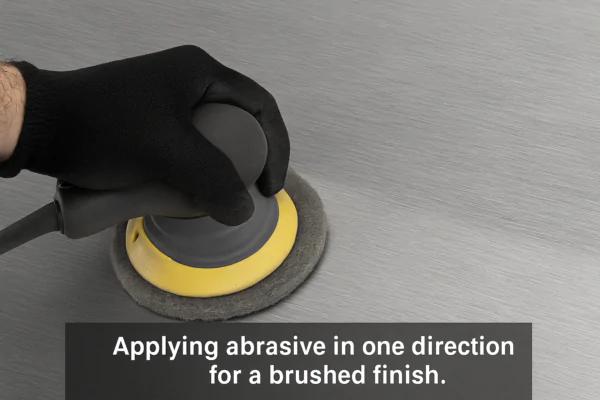
Applying abrasive in one direction for a brushed finish.
Creating a brushed finish requires careful preparation first. You need to remove any deep scratches, pits, or previous finishes by sanding the surface using a sequence of standard abrasive grits, just like you would for preparing for polishing. The goal here is to get a uniform, smooth starting surface. Once the surface is smooth enough (often around 240 or 320 grit, depending on how coarse you want the brushed lines to appear), you switch to the final brushing step. The brushing effect comes from creating a pattern of very fine, parallel scratches across the surface. This is typically done using specialized abrasives. Non-woven abrasive pads (often gray or maroon in color) are commonly used for hand brushing or with orbital tools. These pads contain abrasive particles embedded in a flexible nylon mesh and leave a consistent, linear scratch pattern when moved in a straight line. For larger areas or more consistent results, abrasive belts or discs specifically designed for satin or brushed finishes, often made with silicon carbide abrasive and designed for use on belt grinders or linear finishing tools, are very effective. The critical part of this step is to apply the abrasive uniformly and move in one consistent direction across the entire surface. Any deviation in direction or pressure will result in a non-uniform pattern that looks uneven. Practicing on a scrap piece first is recommended. The final "grit" of a brushed finish is often described by the abrasive product used rather than a numerical grit size, like a #4 finish which is a common brushed look. Using quality film sanding discs from NOVOGRIT in the initial preparation steps helps ensure a smooth, even base before you start the directional brushing.
What finish looks most like stainless steel?
If something isn’t actually stainless steel, what other finishes might mimic its appearance?
Finishes that look most like stainless steel include chrome plating, nickel plating, brushed aluminum, and certain painted or powder-coated finishes designed to imitate stainless steel’s appearance. These finishes attempt to replicate stainless steel’s metallic luster, color, or brushed texture.
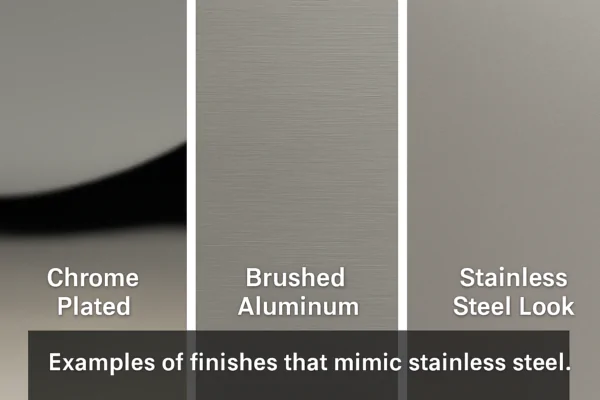
Examples of finishes that mimic stainless steel.
While true stainless steel is an alloy of iron, chromium, and often nickel (giving it its corrosion resistance and appearance), other materials and coatings can be used to achieve a similar look for aesthetic purposes or where the properties of stainless steel aren’t required. Chrome plating provides a very bright, highly reflective surface that can resemble polished stainless steel, though chrome typically has a slightly cooler, bluer tone. Nickel plating can also produce a metallic look, ranging from bright to satin depending on the process, and can be closer in color to some stainless steel grades. Brushed aluminum is another material that can look quite similar to brushed stainless steel; both have a metallic appearance with directional lines, although aluminum is lighter and softer than stainless steel. Increasingly, painted or powder-coated finishes are formulated to mimic stainless steel. These finishes use metallic pigments to create a look that can resemble either brushed or polished stainless steel. They are often used on appliances or other items where the cost or weight of actual stainless steel might be prohibitive. While these finishes can look convincingly like stainless steel visually, they do not possess the same material properties, particularly the through-and-through corrosion resistance of solid stainless steel.
How do you make stainless steel super shiny?
To get a really bright, mirror-like finish on stainless steel, what is the best method?
To make stainless steel super shiny, you must take it through a multi-stage polishing process. This involves preparing the surface with very fine grit abrasives (up to 1000 grit or higher), then using a sequence of buffing compounds, typically starting with a cutting compound and a firmer wheel and finishing with a fine polishing compound (like green chromium oxide) on a soft buffing wheel.
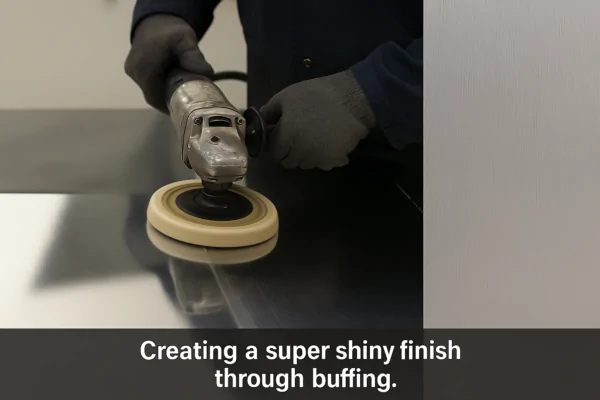
Creating a super shiny finish through buffing.
Achieving a super shiny, mirror finish on stainless steel is essentially taking the smoothing process with abrasives to its extreme, followed by abrasive polishing with compounds. You start with abrasive sanding to remove all imperfections, as described for preparing any stainless surface. For a mirror finish, the final sanding step must leave an extremely fine scratch pattern, meaning you need to progress through very high grit numbers, often exceeding 1000 grit. Using quality abrasives like NOVOGRIT film discs in these fine grits is important for creating the necessary smooth base without introducing random deeper scratches. Once the surface is meticulously sanded, you move to the buffing stage. This requires a buffing machine (like a bench grinder with buffing wheels or a dedicated buffing machine) and appropriate buffing compounds. You typically start with a cutting compound applied to a firmer wheel (like sisal or spiral sewn cotton). This step removes the last, finest sanding marks. Then, you switch to a polishing compound (like the green chromium oxide compound mentioned earlier) and a softer wheel (like loose leaf cotton or felt). The very fine abrasive particles in the polishing compound, combined with the action of the soft wheel, work to micro-level the surface and bring out the maximum reflectivity. The process requires patience, consistent pressure, and continuous movement of the workpiece against the wheel to avoid creating hot spots or uneven polishing. It’s the culmination of careful abrasive work and the final refining action of the polishing compound that creates that super shiny, mirror finish.
How can I make my stainless steel look better?
If your stainless steel surfaces are looking dull, scratched, or stained, what steps can you take to improve their appearance?
To make your stainless steel look better, first thoroughly clean the surface to remove dirt, grime, or stains. Then, address any scratches or dullness through targeted abrasive work, starting with a grit coarse enough to remove the damage and progressively moving to finer grits. Finally, apply the desired finish, whether cleaning and maintaining an existing finish, creating a brushed look, or buffing to a high shine.
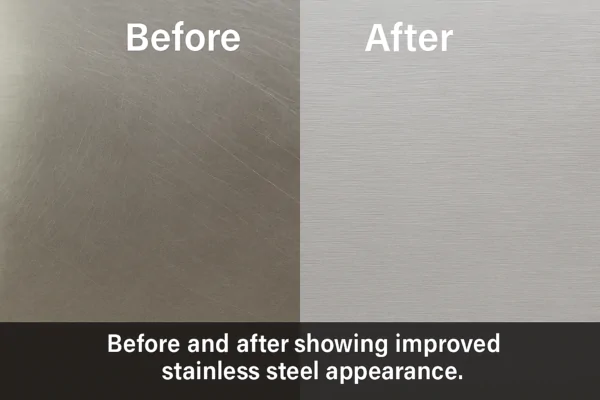
Before and after showing improved stainless steel appearance.
Improving the look of stainless steel depends on its current condition and your desired outcome. Start with a good cleaning. Often, simply removing built-up grease, grime, and fingerprints with a suitable stainless steel cleaner and a soft cloth (wiping with the grain) can make a big difference. For water spots or light stains, a paste of baking soda and water can sometimes help, rubbed gently with the grain. If the surface has scratches, you will need to use abrasives. For minor surface scratches, sometimes working along the grain with a fine grit non-woven pad can blend them in on a brushed finish. For deeper scratches, or if you want a uniform finish, you will need to sand the entire surface using progressive grits, starting with a grit coarse enough to reach the bottom of the scratch and working your way up to finer grits. Companies like Hangzhou sharp Technology Co., Ltd., with their range of NOVOGRIT abrasives, provide the necessary tools for this kind of surface restoration. After addressing scratches with abrasives, you can then refinish the surface. This might mean simply cleaning and applying a stainless steel polish for maintenance, creating a brushed finish using a satin finishing abrasive, or going through the full buffing process with compounds and wheels to achieve a high-gloss look. The key is to assess the surface condition, decide on the desired finish, and follow the appropriate abrasive and finishing steps carefully and systematically.
Conclusion
Achieving a perfect stainless finish requires selecting the right type (brushed or mirror) and applying a systematic process. This involves preparing the surface with progressive abrasive grits and then using the appropriate directional abrasives for a brushed finish or buffing compounds and wheels for a high shine. Careful technique is essential for both.
You may also be interested in:

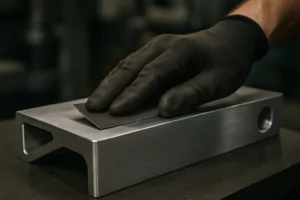
Best Sandpaper for Aluminum: NOVOGRIT's Guide to Flawless Finishes
What is the Best Type of Sandpaper to Use on Aluminum? Do you find yourself frustrated by sandpaper that gums up instantly when you try to smooth aluminum? It is
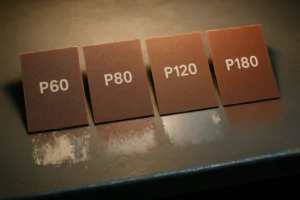
Best Sandpaper for Paint Removal: Grits, Types, & Tips | NOVOGRIT
What is the Best Sandpaper for Removing Paint? Are you tired of staring at chipped, peeling paint on your furniture, walls, or even your car? It’s a common problem, and
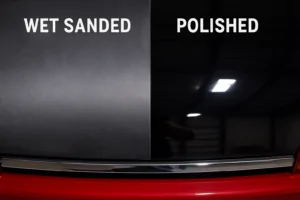
Automotive Wet Sanding: Supplies, Liquids & Best Sandpaper
Automotive Wet Sanding Supplies: What Do You Really Need? Wet sanding is a crucial technique in automotive refinishing, used to achieve a flawlessly smooth surface before painting or polishing. Unlike
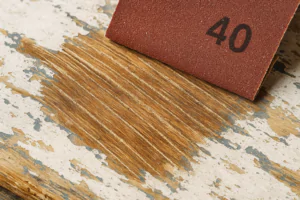
Best Sandpaper for Paint Removal & Grit Guide
What Is the Best Sandpaper for Removing Paint? Removing old paint can be a tedious job, but using the right sandpaper makes all the difference. It’s not just about grit;
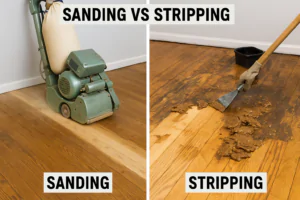
Hardwood Floor Sanding: Screen vs. Sandpaper & Best Practices
Sanding Screen vs. Sandpaper for Hardwood Floors: Which is Best? When you’re tackling hardwood floor projects, choosing the right abrasive is crucial for achieving a smooth, professional finish. Both sanding
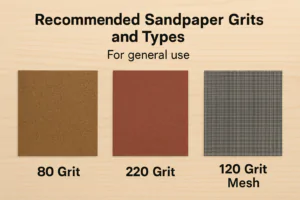
Paper Backing vs. Mesh Sanding Discs: Which Abrasive to Choose?
Paper Back vs. Mesh Sanding Discs: Which One Should You Pick? Choosing the right sanding disc backing can significantly impact your project’s efficiency and finish quality. Paper-backed discs are a

Sanding Mesh vs Paper: Which is More Economical and Better?
Is Sanding Mesh More Economical Than Sandpaper? Comparing Abrasive Costs When stocking up on abrasives, cost is always a factor. Paper sandpaper has traditionally been the standard, but newer mesh

Sanding Nets & Screens Use Cases: When to Choose Mesh Abrasives
Sanding Nets and Screens: What Are Their Best Use Cases? When you encounter sanding nets or screens, you might wonder where they fit into your sanding projects. Unlike traditional solid-backed

Paper vs. Mesh Sanding Discs: Which Abrasive to Choose?
Paper vs. Mesh Sanding Discs: Which Should You Buy? Choosing the right abrasive disc is essential for efficient and effective sanding. Two primary types dominate the market: traditional paper-backed discs
